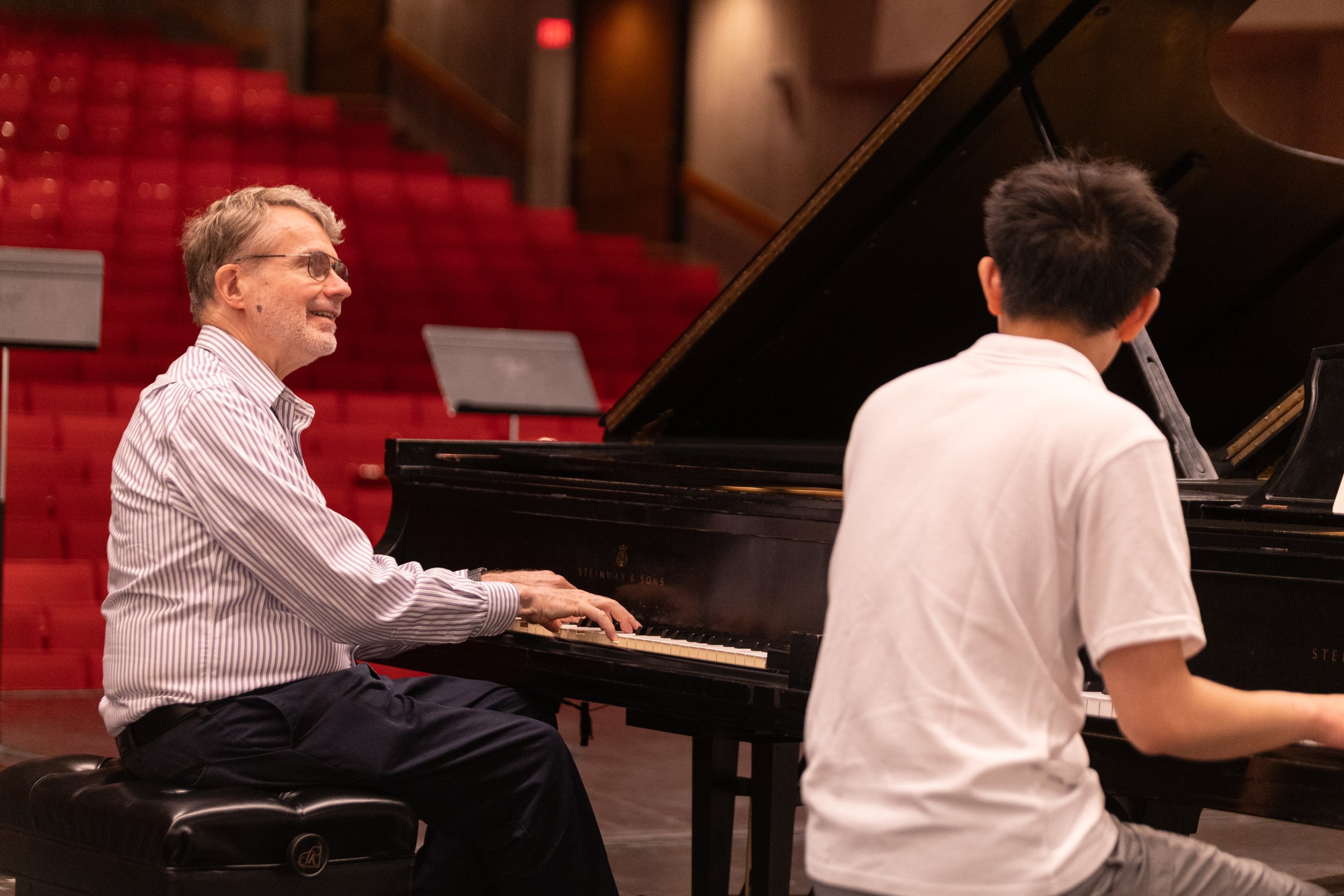Dr. Lymenstull Interview
Written by Alice Song & Lily Wodzisz
After watching the IAA orchestra’s November 2nd performance, it was clear that the soloist who played with the orchestra was no stranger to Interlochen. Dr. TJ Lymenstull was a piano instructor at IAA from 1979-1981 and 1998-2024. Additionally, he taught at IAC from 1999-2014 and 2016-2023. Before coming to Interlochen, Dr. Lymenstall served on the faculty at the University of Southern California (USC), where he was the Associate Professor of Piano Pedagogy. He was also a Teaching Fellow at the USC Center for Excellence. He received a Zumberge Faculty Research and Innovation Fellowship, USC’s most prestigious research grant, to research piano music from China. He has performed with orchestras in the US, China, Japan, Austria, Italy, and Taiwan. His bachelor’s and master’s degrees are from the Eastman School of Music, and his doctorate was received from the University of Southern California. Dr. Lymenstull’s contributions have profoundly impacted the Interlochen community, and his return to Interlochen with Gershwin’s Piano Concerto in F Major was quite nostalgic.
The Interlochen Times interviewed Dr. Lymenstull, where he talked about his first time playing with an orchestra. He recalled playing the Liszt second concerto and the first movement of the Schumann concerto with his local symphony orchestra as a senior in high school. To him, that performance “was so exciting and very satisfying, really terrific.” Lymenstull says to “know everything that’s in the orchestra as well as you do your own” when performing with an orchestra. He also states that he meets with the conductor to clarify and reach a consensus on tempos and what they want to do with the piece. His wife, also a pianist, plays the piano reduction of the orchestra’s accompaniment on another piano as practice. When asked about the difference between playing with another pianist and a full orchestra, he explained that it’s “the sound primarily, the beauty of playing with the whole orchestra is that you get the whole orchestra” and that “certain things contrast much more naturally when you’re playing one instrument and other people are on other instruments rather than when you have something that’s been arranged for two pianos; the sound is the same.” Lymenstull is fond of the Gershwin Piano Concerto as it has grown on him over the years, and it is “brilliant in the sense that it's really well conceived as well as showing off the instrument beautifully and being a lot of fun to listen to.” In particular, he notes that in “the lyrical places it’s so satisfying to explore the different personalities of it” and in “the exciting places to explore the different ways that it's exciting and the ways that it rocks.”
His advice for high school students is to “learn all of those concertos, learn as many as you can now, work really hard.” He reasons that learning a concerto during adolescence is “a little bit like if you ride a bicycle and you’re going on a downhill slope: you know you already got the hill helping you. Pedal hard and you can cover a lot of territory, really work hard. But if you just chill and say, ‘Oh, I'm going downhill’ and just slide along, the uphill is later and it’s much harder.”
The Gershwin Piano Concerto is an important work of music in the contemporary piano music canon. George Gershwin (1898-1937), a New York born American composer, is known for his works of broadway musical theatre and orchestral compositions, which combine elements of classical, popular, and jazz music. The origins of Gershwin’s piano concerto in F strikingly juxtaposes the creation of his previous and most well-known work, Rhapsody in Blue. Legend has it that Gershwin composed the Rhapsody in only five weeks because he forgot about the request until January 1924, right before the February 12th premiere, giving the premiere an unfinished score that was a product of not only Gershwin but also Ferde Grofé. The central theme of the Rhapsody was written on the train from New York to Boston.
In contrast, his piano concerto came together in a much more sophisticated manner. It was not only his most substantial work yet, but also the only one he scored entirely. After the premiere of the Rhapsody was received so positively by audiences, Gershwin said, “Many persons had thought that the Rhapsody [in Blue] was only a happy accident. Well, I went out, for one thing, to show them that there was plenty more where that had come from.” He did just that, producing a three-movement piano concerto in his mother tongue: jazz. The 27-year-old Gershwin first performed this masterpiece alongside the New York Symphony in December of 1925, and reviews were glowing.
Students and faculty fondly remember Dr. Lymenstull’s long-standing influence on the IAA campus. Gershwin’s Piano Concerto in F, a piece as demanding as it is exuberant, serves as the perfect vehicle to showcase not only Dr. Lymenstull’s technical finesse but also the orchestra’s dynamic energy. His advice emphasizes the unique experience of performing with a full orchestra–a lesson in musical collaboration and artistry. This concert stands as a bridge between past and present, celebrating not only Gershwin’s innovative spirit but also Dr. Lymenstull's invaluable legacy at Interlochen.

